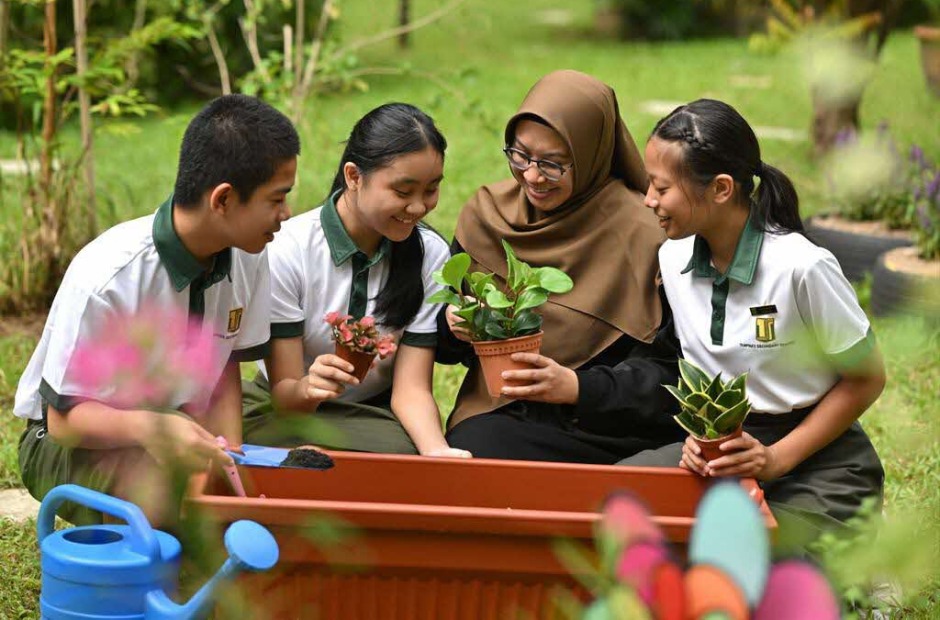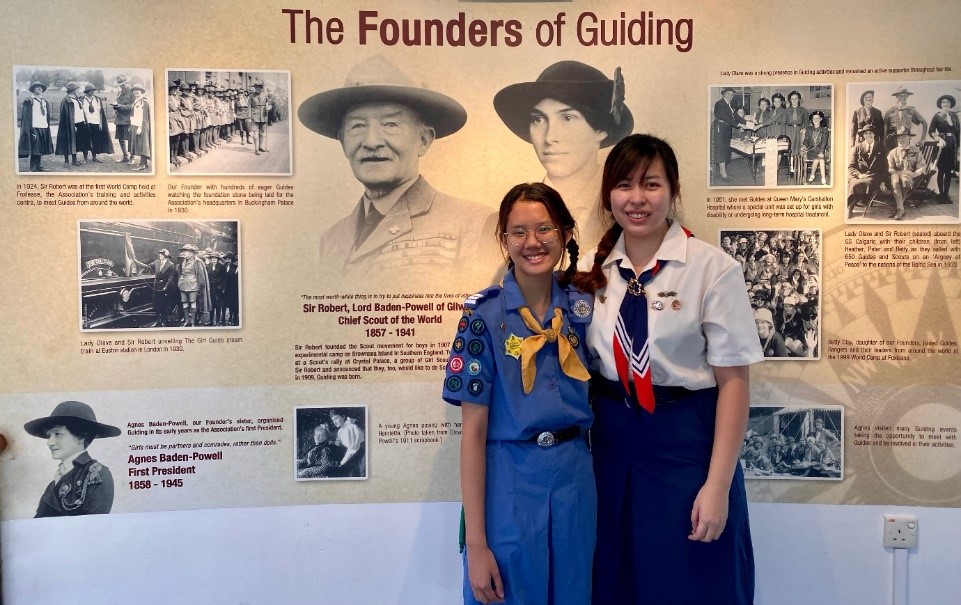Words Come to Life in “The Dungeon”
12 Aug 2007

Research Activist Mdm Aziz (first from right) gets a first hand look at the students in dramatic action with their teacher Ms Lazaroo (second from right).
In the deepest recesses far below the school building, a family is in trouble, a pig communicates with a spider, and a group of youngsters empathises with the king of the toilets. An unlikely scenario at a local secondary school? Perhaps, but it’s all true.
In “the dungeon” of Tampines Sec School, book characters come to life. They breathe, think, talk and interact with each other; they love, laugh, hate and plot their revenge. The action takes place regularly at the disused rifle range at the basement (hence the nickname, “the dungeon”), where students are given the opportunity to step into someone else’s shoes during Literature lessons.
The brainchild of two enthusiastic teachers, drama is used alongside conventional teaching methods as an approach that makes Literature more accessible to students. The teachers and a Research Activist (also the Head of Department for English and Literature) have found this Teach Less Learn More method has a positive impact on the students’ learning.
Enhancing the intellectual, social and emotional
Says Ms Natalie Donata Lazaroo, one of the two teachers behind the idea of using drama to study Literature: “We’re drama-trained, so we understand the benefits that drama can bring, especially to students from a neighbourhood school such as ours. We wanted them to enjoy themselves, but they also had to be learning – not just about Literature as a subject, but also the social and emotional aspects that come with using drama.”
Using drama in the classroom isn’t just about performing before an audience or memorising a script; a lot of it has to do with “meaning making”. Ms Lazaroo uses a combination of techniques like tableau (still image), role play, debate, discussion/negotiation, mime and movement-based activities to engage the students.
Balancing fun and learning
Each lesson is carefully planned to ensure that students gradually develop the desired skills, knowledge and attitude. Student learning is monitored through continual assessments. For example, students pen their reflections at the end of every lesson, which helps the teacher assess their progress. While students still have structured tests and a year-end examination, they also get to select their best three reflections to be graded every semester.
The use of drama has paid off in motivating students who might otherwise not connect with Literature, helping them to respond at a deeper level to the subject. For example, Sec 2 student Nur Nabilah says, “I like Literature lessons because we can be somebody else.”
Agreeing whole-heartedly is her classmate Darren Tan: “Through the tableau, acting and reflections, we can understand the characters better, and internalise their emotions. We can also relate what is happening to our everyday life.” When asked if they would offer Literature for their ‘O’ levels, the students’ unequivocal answer is: “Yes!”

Students step into the shoes of Punjabi townsfolk to dramatise the short story, “And He Lived Forever After”.
Providing the facts and figures
The students’ enthusiasm correlates with Research Activitist Mdm Yasmin A Aziz’s findings in her paper, “Fun in Learning Literature through Drama”. After 180 Sec 1 students experienced this teaching method in 2006, they completed Mdm Yasmin’s survey on their perceptions towards Literature.
The collated data showed that most students found the subject interesting (91.7%) and enjoyable (90.56%). They agreed that it made the subject more interesting (90.00%), helped them learn the lessons well (89.44%) and encouraged them to particpate more actively in class (84.44%). This positive response also correlated with the students’ achievement in their examinations.
With solid evidence to support what Mdm Yasmin calls “the gut feeling that drama is a powerful tool to teach Literature”, Tampines Sec School is ready to recommend this method to other schools. Ms Lazaroo reflects “Teachers who want to use drama should be willing to immerse themselves in a classroom environment where they need to take risks. Much of the drama involves teachers themselves getting into role, and not really knowing what the final outcome may be.”



eacf7ba7a8a66eb2afccc900c73e6f2e.jpg)


